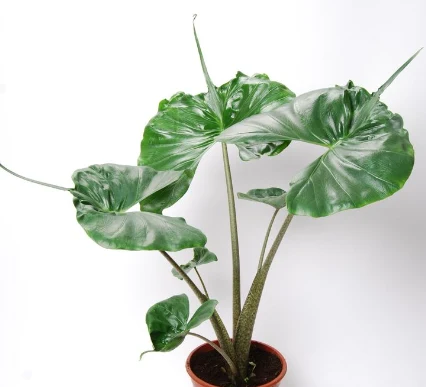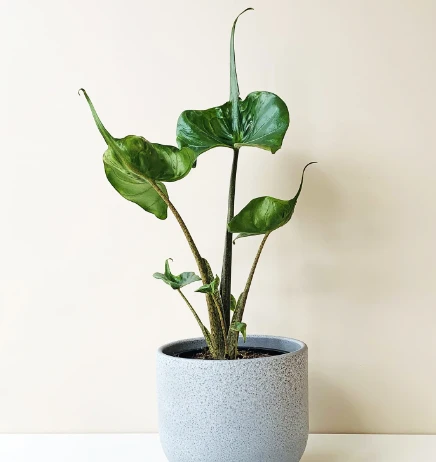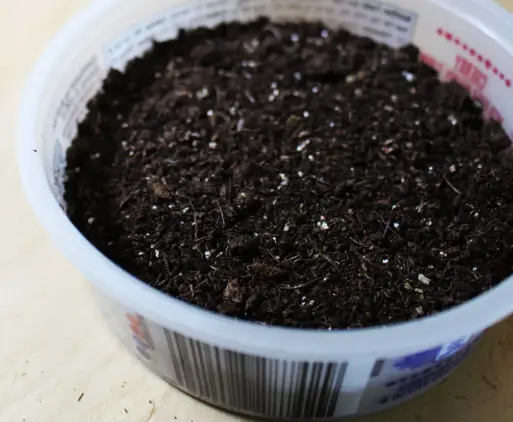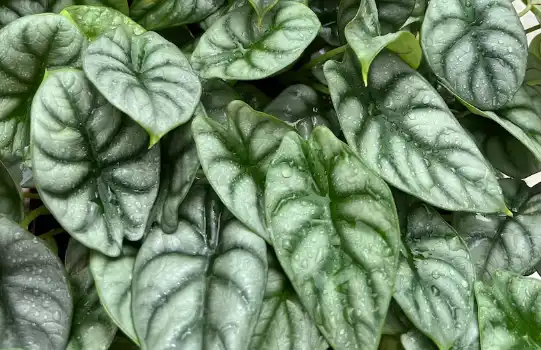Alocasia macrorrhiza stingray care, propagation- All you need to know
If you are searching for a unique plant for your house, the alocasia macrorrhiza stingray will be at the top position in the plant list. But the beautiful foliage has to be maintained properly by completing their requirements.
Alocasia macrorrhiza stingray plant needs bright but indirect sunlight with proper watering in the sandy loam and nutrient-enriched soil so that the soil can retain enough moisture and nutrient. The temperature should be between 55-85°F along with 40-70% humidity.
Let’s jump on the article to get more information about their maintenance, problems and solutions.
Alocasia macrorrhiza stingray overview
| Scientific name | Alocasia macrorrhiza ‘stingray’ |
| Family | Araceae |
| Other names | Giant taro, alocasia stingray |
| Origin | Southeast Asia |
| Plant height | 1-1.2m tall |
| Plant type | Perennial plant |
| Leaf | Green leaves have long pointed tips with curves and are flattened on the lower sides. Almost looks like a marine animal ‘stingray’ |
| Stem | The greyish stem is swollen downward and becomes narrow upward |
| Soil | Slightly acidic, sandy loam and well-drained soil |
| Sunlight | Bright indirect light |
| Watering | Moderate watering once or twice a week |
| Humidity | 40-70% |
| Temperature | 55 to 85°F |
Where to buy the alocasia macrorrhiza stingray plant?
To buy an alocasia macrorrhiza stingray plant, firstly you can search in your local nurseries. Since it is a rare plant, you may not get this plant in all your nearby nurseries. In that case, the best factor is to collect the plant from any online plant shops. You can go Etsy. A lot of etsy shops are selling you lovely macrorrhiza stingray.

Alocasia macrorrhiza stingray plant care guide
Here, I am going to discuss the caring factors of this plant. Though it is a hardy plant, the absence of enough caring may be too harmful and may lead to death. So let’s know the points on which you have to focus on caring issues. These are-
- Light requirement
- Water necessity
- Temperature and humidity
- Best fertilizer
- Best soil
Light requirement
One of the basic materials of a plant is its light intensity. Sunlight or any other light element is mandatory for their food production. Again, the excessive light intensity will burn the leaf and create brown spots on them. Hence, always try to keep them in bright and indirect light. This may be a little far from your window which is in an east-west direction.
Watering guide
Following that, I must mention the importance of the quality and quantity of the water. Watering once or twice a week is enough for the alocasia macrorrhiza stingray. But make sure too much water is not clogged in the root. Again, water should be at normal temperature, salt-free and disease-free pure water. The plant cannot uptake salty water.
Soil requirement
After that, I want to meet you with the soil properties of the plant. Soil should be sandy loam and nutrient-enriched soil. You can mix perlite, coco-peat and sphagnum moss with the soil to increase its fertility. Then, there should be an enougj drainage system so that after retaining the moisture, excess water can go out.
Temperature and Humidity
Next, the temperature range should also be strictly followed to maintain the proper foliage growth of the plant. Temperature ranging between 55 to 85°F is perfect for them. But they cannot tolerate temperatures below 40°F. You must keep them inside during this season. Again, 40-70% humidity is perfect for them.
Best fertilizer
Let’s finish the caring guides with the fertilizer requirement of this plant. Alocasia macrorrhiza stingray plants can grow better if they are provided with perfect nutrient materials. For this purpose, you need to provide liquid fertilizer with every spring. You can use a little in summer too but that is not mandatory as they are enough hardy to maintain themselves.
Alocasia macrorrhiza stingray plant propagation
Now, I will present one of the most important topics about the propagation method. If you want to multiply this plant in your home, you can simply do this by stem cutting. Let’s go through the method.
Step-1: Mother plant selection: Select a mother plant from which you will collect the cutting. The plant should be healthy, matured and disease-free.

Step-2: Cutting: Divide the stem which is called a corm into several parts so that each of them can grow as a plant. At least one node should be adjusted there.

Stem-3: Pot preparation: Prepare the pot with sandy loam soil, perlite, coco-peat and sphagnum moss. Plant the corm in that mixture and water a little to the plant. Thus, you can propagate this beautiful plant.

How to repot alocasia macrorrhiza stingray plant?
Repotting once every two years is beneficial for the macrorrhiza stingray plant. Again, if you notice root rot or root-bound problem in your plant, you must do this procedure. You have to uproot the plant from the previous pot, then prepare the new pot as I suggested before and then plant it in the new pot. The root system should be undisturbed in this phase.
Why are my alocasia macrorrhiza stingray plant leaves turning brown?
Alocasia macrorrhiza stingray plant can turn brown due to overwatering or over-fertilization problems. Overwatering causes root rot and Over-fertilization is responsible for leaf burning that appears as brown leaves. Sometimes pest attack is also responsible for this browning problem. Then, insecticides will be the best solution for you.
Why are my alocasia macrorrhiza stingray plant leaves curling?
The cause of alocasia macrorrhiza stingray plant leaves curling is less watering with high temperatures and low humidity. In the summer season, the plant should get enough moisture through watering. In the case of less watering, the water transpires much in hot weather. So the cell fluids get dried and become curled and crispy.
Alocasia macrorrhiza stingray plant vs alocasia cucullata plant
The Alocasia macrorrhiza stingray plant is much similar to the alocasia cucullata plant as they both have green foliage with upward leaves. Though the cucullata leaves also have pointed tips they are not too large as the macrorrhiza stingray plant. Again, the stems are green in cucullata but the stingray stems are greyish.

Is alocasia macrorrhiza stingray a fast-growing plant?
Yeah! Alocasia macrorrhiza ‘stingray’ is a fast-growing plant. That’s why they can go too high in a short time. If you again use fertilizers for your plant, the growth speed is enhanced. Both the stems and the leaves can quickly divide the cells and can develop the inside vascular system. That’s why this plant can grow fast.
What are the uses of the alocasia macrorrhiza stingray plant?
The main use of alocasia macrorrhiza is that they are edible. But you have to take some precautions in this case. You should remove the sap and the raphids carefully as they can create irritations in the skin.
Along with this, you have to cook the corm for a long time. Besides, the ornamental use of alocasia macrorrhiza is beyond description as it is a unique plant due to its pointed leaf structure.
Final thoughts
So, we are at the last phase of this article. As I have discussed the all over methods of caring for and problems of the plant, I can provide you with a little suggestion from this perspective.
- Don’t keep the plant in scorching sunlight or excessively low or high temperatures.
- Water your plant when it needs
- Pruning may facilitate foliage growth. So try this regularly after a proper interval
- Don’t keep the plant in moisture that it doesn’t need.
If you find the suggestions helpful, you are welcome to pick them and apply them to your plant to get a perfectly decorated room.







